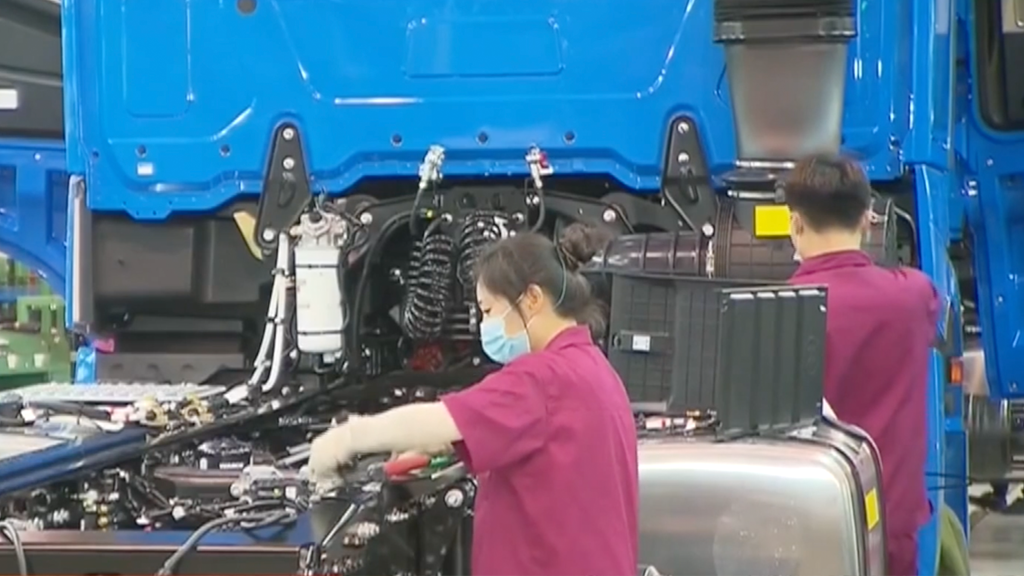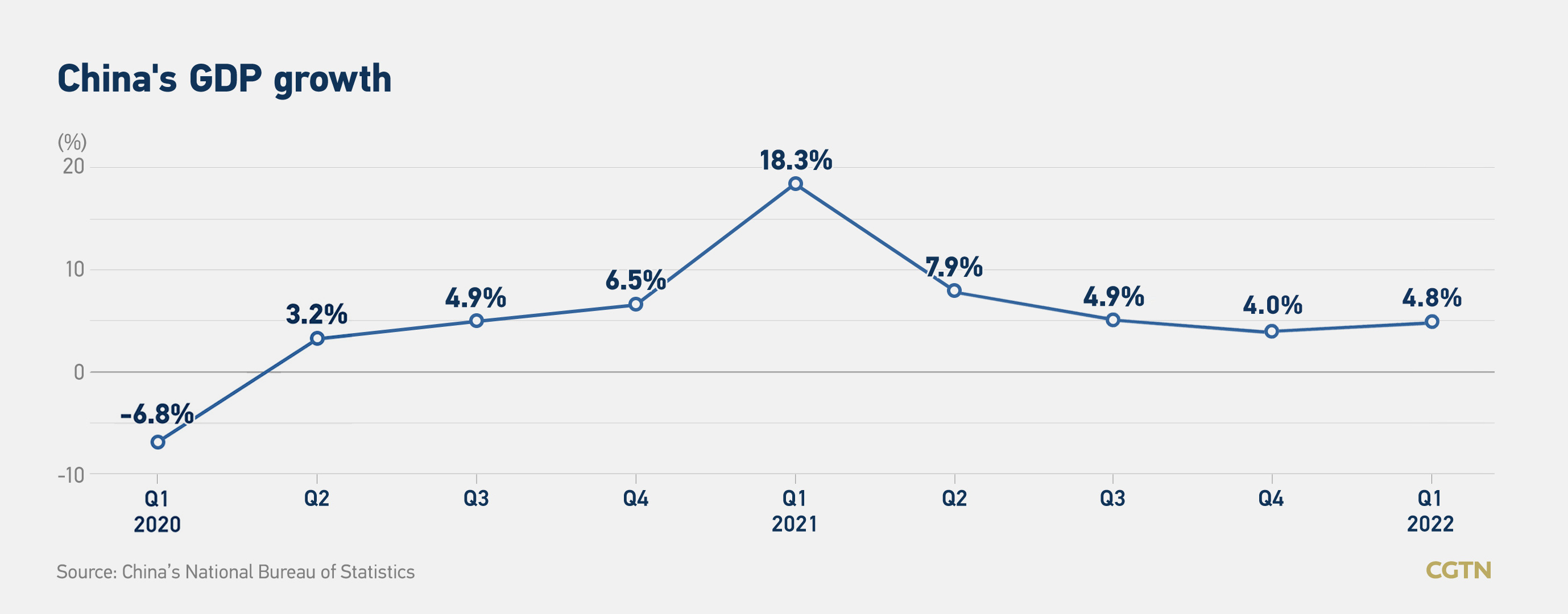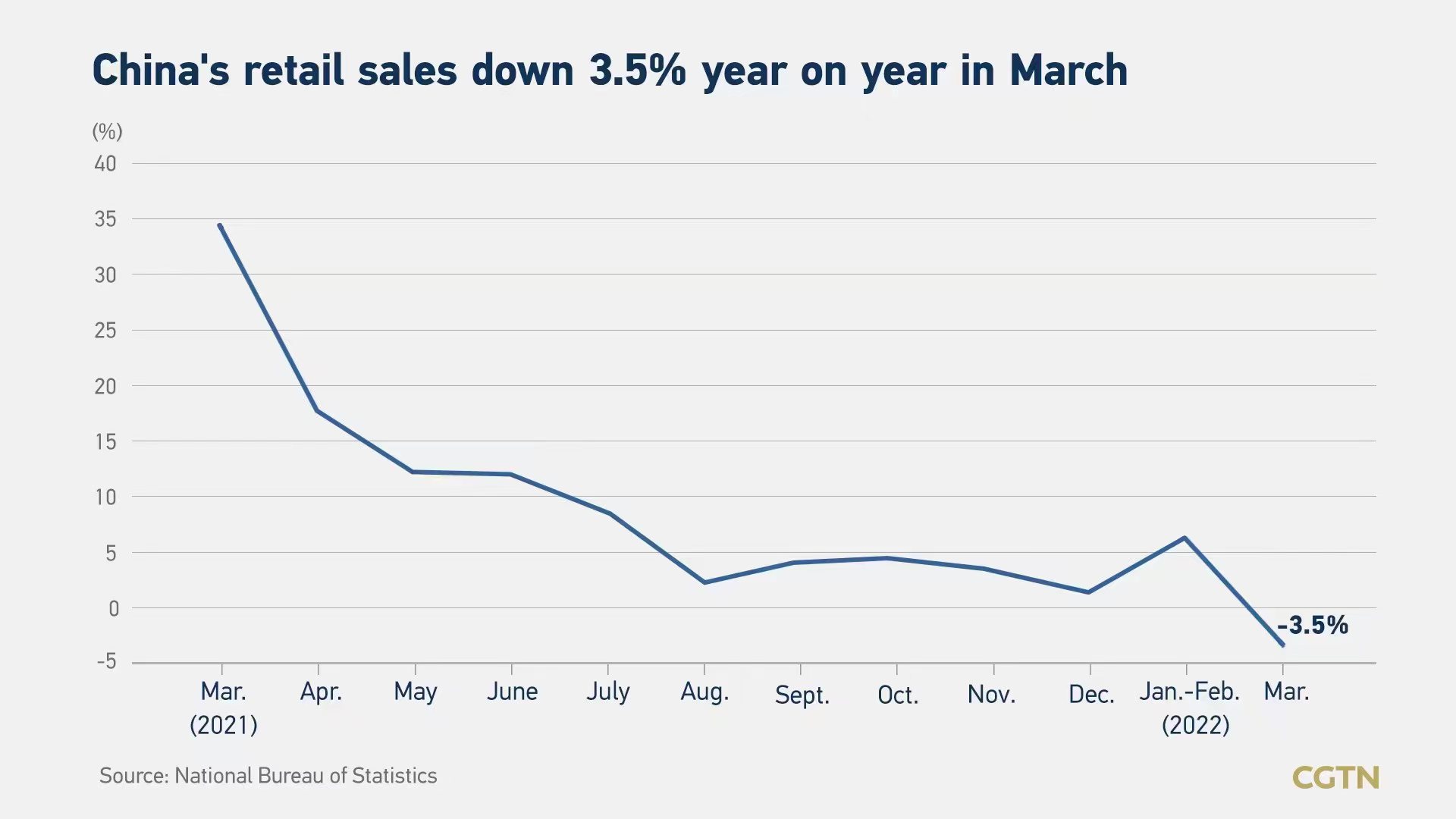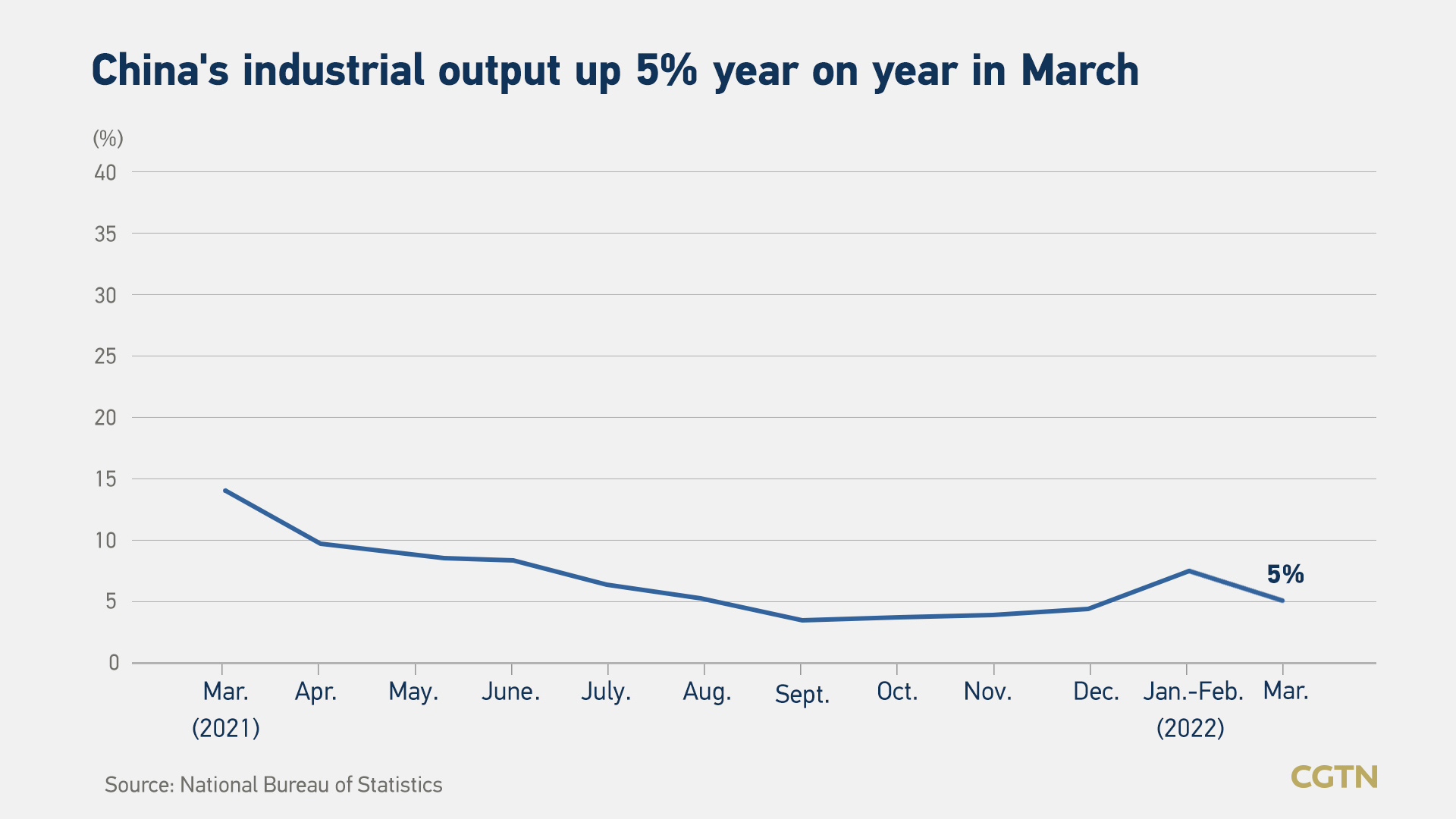00:30

China's gross domestic product (GDP) expanded 4.8 percent year on year in the first quarter (Q1) of 2022, despite disruptions caused by the resurgence of COVID-19 cases and uncertainties in the international environment, the National Bureau of Statistics (NBS) said on Monday.
The figure beats the forecasts of 4.4 percent and 4.3 percent by Reuters and Bloomberg economists, respectively.
The quarterly result is supported by a strong January-February economic recovery. Retail sales grew by 6.7 percent, while fixed-asset investment rose by 12.2 percent during the period.
Quarterly growth slowed from 1.6 percent in Q4 of 2021 to 1.3 percent.
China's per capita disposable income came in at 10,345 yuan ($1,623) in Q1, a nominal increase of 6.3 percent year on year, NBS data showed.

Retail sales slow
Retail sales slumped by 3.5 percent in March, weighing the Q1 retail sales growth down to 3.3 percent.
The retail sales of commodities increased 3.6 percent, and revenue from catering was up 0.5 percent year on year in Q1.
"The main drags of the economy were weak consumption and property investment," said Wang Dan, a chief economist at Hang Seng Bank, pointing to the fast-growing e-commerce sector.
Online retail sales of physical goods rose 8.8 percent in Q1, accounting for 23.2 percent of the total retail sales, data showed.
Investment in real estate development edged up 0.7 percent in the first quarter. However, the pace slowed for the 12th consecutive month.

Manufacturing and investment
Industrial output went up 6.5 percent year on year in Q1. It rose 5 percent in March, compared with a 7.5-percent increase in the first two months of the year.
The official manufacturing Purchasing Managers' Index (PMI) dropped to 49.5 in March.
China's fixed-asset investment rose 9.3 percent year on year in the first three months of 2022, with manufacturing investment surging 15.6 percent, surpassing the pre-COVID-19 level.
Policies to strengthen supply chain security and tech innovation supported the strong performance in manufacturing investment, said Wang.
She expects manufacturing investment to maintain high growth throughout the year.

Labor market
In the first three months, 2.85 million new jobs were created in urban areas across the country, and the surveyed urban unemployment rate was 5.5 percent. In March alone, the national urban surveyed unemployment rate was 5.8 percent, up 0.3 percentage points from the previous month, data showed.
More monetary easing
Wang said high commodity prices and tight pandemic control measures pose major pressure on the economic performance in the second quarter.
She expects the Q2 GDP growth rate to slow to below 4 percent and expects further monetary easing to stabilize growth.
China has issued more monetary and fiscal measures to support economic stability amid a complicated global situation and local COVID-19 outbreaks.
The central bank announced on Friday that it would cut the reserve requirement ratio (RRR), the amount of cash banks must hold in reserves, by 0.25 percentage points, releasing 530 billion yuan in long-term liquidity.
The country has quickened the issuance of local government special bonds for project construction. By the end of March, China had front-loaded about 1.25 trillion yuan worth of the 2022 bond quota out of a planned total of 3.65 trillion yuan.
Nomura analysts expect the People's Bank of China to further cut RRR by 25 basis points before mid-2022 to boost growth in the second half of the year.
Lu Ting, chief China economist of Nomura wrote in a note that they also predict rate cuts in the one-year medium-term lending facility and one-year and five-year loan prime rate in the next two month.

